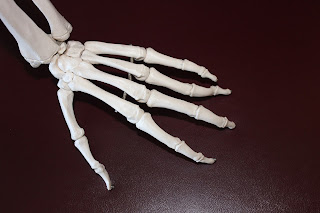Joints of a person running
Exercise has a huge impact on your health because it helps to normalize glucose, insulin, and leptin levels by optimizing exercise insulin and leptin receptor sensitivity. This reduces the inflammatory response in the body, thus reducing the potential risk of developing numerous chronic diseases.
The benefits of exercise increase with continuous exercise. In fact, the body's muscle tone and muscle conditioning are lost much faster than you might think.
Injuries are one of the reasons you no longer have to work massage out and need to rest. As I have been doing for years, if you enjoy jogging and running, you may have experienced injuries to the point that you cannot do these exercises for the time being.
By taking care to protect your joints, you can prevent numerous running injuries. Runner's knee, Achilles tendinitis, hamstring injuries, and fatigue fractures are common injuries that can be prevented by taking care of the ankle, knee, and buttocks.
Joint anatomy
Joints are areas in the body where two or more bones meet, and most of the joints are easy to move and allow movement and movement.
The joints that are most affected while running are located in the feet, knees, and buttocks, and there are numerous structures that help support and cushion those joints. Each joint has a band of rough connective tissue that supports the joint and keeps the joint stable as you move forward and sideways.
Ligaments connect bones to bones, and tendons connect muscles to bones. Joints also utilize a number of mechanisms to reduce friction between the bones. This reduces damage to the bone's head and allows you to move your body more freely. Cartilage helps reduce resistance by covering the surface of the bones when they come into contact with each other.
Joints also have a synovial membrane (synovial membrane), from which a sticky synovial fluid that provides lubricant is released. This membrane covers the joint and seals the joint into the joint capsule.
Between the bones and ligaments, there is also a pocket filled with fluid called a synovial sac, which adds an extra layer of buffering in the joint. These structures are part of a system that protects your joints from injury and overuse.
The benefits and risks of running
Knowing the benefits and risks of any activity will benefit you and help you avoid risks. Like other forms of exercise, running can help you maintain a healthy weight, balance insulin and leptin receptors, reduce stress, and increase confidence. Running boosts lung function, reduces blood pressure, and supports the immune system.
Running a sprint boosts your heart rate and improves cognitive activity. Aerobic (cardiovascular) exercise in older people can reduce the risk of Alzheimer's disease. People who regularly run in the morning have also reported improved sleep quality and concentration for the day.
A study published in The massage American Journal of Cardiology found that running at a slow speed of 5 to 10 minutes per day can reduce mortality and extend life by three years.
While there are numerous benefits, Business Trip Massage there are also many potential risks. Several strategies in today's article can help prevent injuries.
Without proper care, women are at risk of damaging the Cooper's ligament, which supports the breast tissue, which eventually leads to gradually sagging breasts. This means that no matter what speed you run, you should wear a sturdy bra that takes care of it properly while you run.
Also, when compared to other aerobic exercises, running seems to have a high potential risk of overdoing. This can be linked to stressors in the body and their effects on the endorphin system, which can eventually lead to addictive running and increase the risk of injury.
Impulsive running can lead to running longer distances, which may also increase your risk of heart disease. Several studies have demonstrated that extreme endurance can increase oxidative stress, inflammation, and damage to the heart muscle, eventually leading to heart disease.




Comments
Post a Comment